How to distinguish quality spices from fakes: paprika

ATTENTION! CHEAPLY INADGED RAW MATERIALS IN SEASONS - THIS IS DANGER FOR LIFE
Paprika (Latin Capsicum annuum) is a red capsicum of weakly burning varieties, from which the seasoning is made, has a bright red color, a sweetish taste.
Spice can be found in regions such as Hungary, Turkey and the United States, but on an industrial scale paprika is grown in China, Peru and Spain.
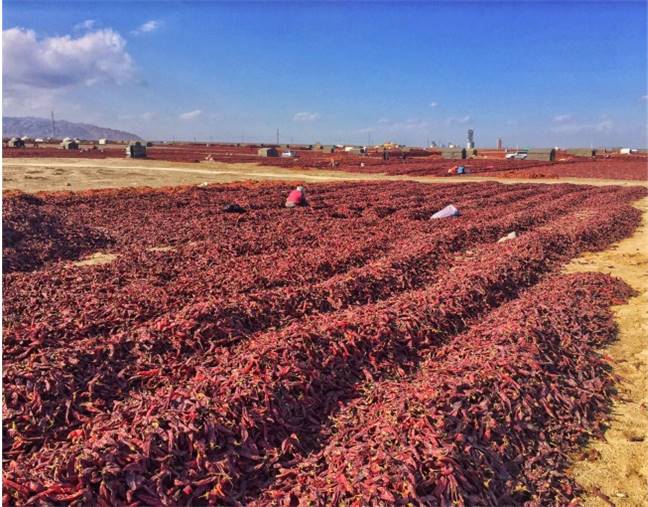
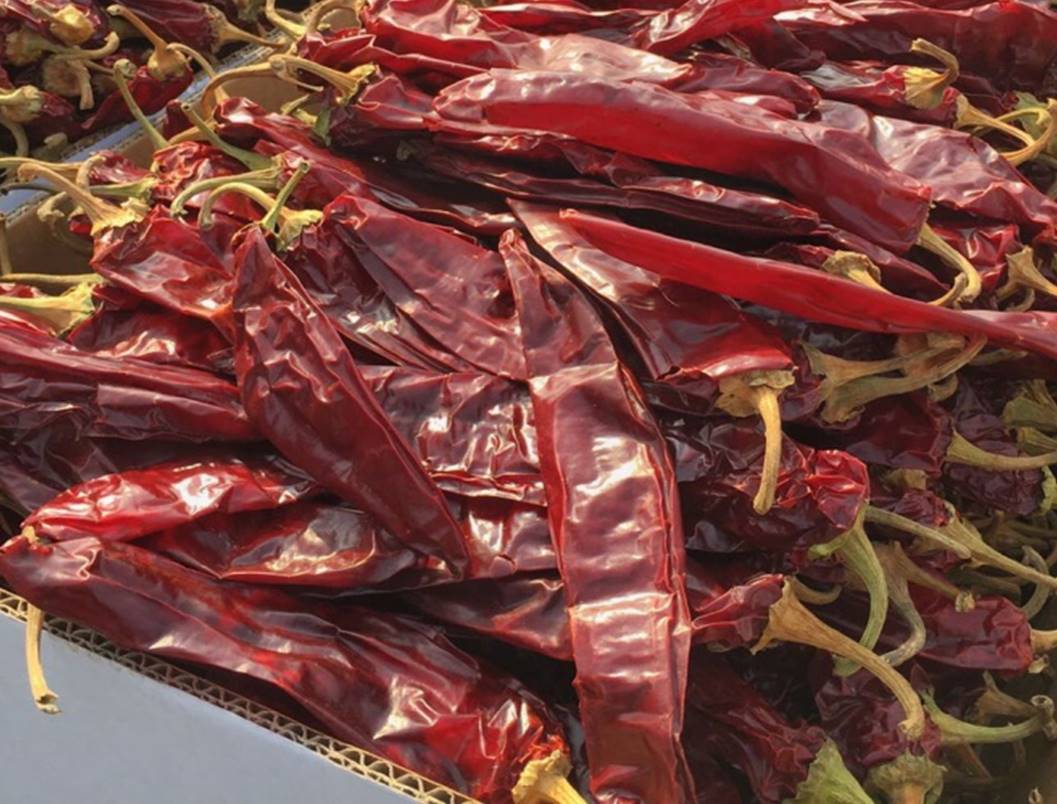
Paprika. Beneficial features
Paprika is rich in vitamins B1, B2, E, PP. But most of all in her vitamin C. By the amount of ascorbic acid, pepper among the other vegetables ranks first. And vitamin P in paprika is more than in lemons. Dried paprika activates metabolic processes, increases the body's immunity.
- Accelerates metabolic processes.
- Improves digestion. With various disorders of the digestive process, such as flatulence, spasms, stomach colic, nutritionists recommend to introduce a fresh or dried paprika into the diet.
- Perfectly affects the mucous membranes, promotes their strengthening.
- Paprika has a beneficial effect on blood circulation, especially with the disease of veins and arteries, prevents blockage of blood vessels.
- Perfectly restores the nervous system, helps after stress and depression.
- Well stimulates the growth of hair and nails, so it is recommended to use paprika to prevent early baldness, and also add it to pepper tinctures for hair.
- Paprika of burning varieties is an excellent means for losing weight. This spice well stimulates the digestive system, accelerates heat exchange, removes excess fluid from the body and promotes fat burning.
Paprika in medicine
Modern medicine recommends the use of gels, ointments and other products made from spicy paprika. They warm up the body with diseases of the spine and joints, while the natural product is distinguished by an affordable price and proven effectiveness.
When colds are often used special pepper patches that provide blood flow.
Add to the diet of paprika recommended for people with diabetes, obesity, as well as people prone to the appearance of edemas. The natural component - capsaicin liquefies the blood, thereby preventing the occurrence of blood clots, and a high sodium content in the spice helps strengthen bone tissue.
In the menu of a slimming person, the spice must be present, as this spice adds a touch of spice to low-calorie and dietary dishes, helping to overcome cravings for harmful food.
Paprika in cosmetology
This spice is suitable not only to improve the taste of food, it is also able to improve the appearance of a person. A pinch of seasoning is recommended to be added to face masks, they activate blood circulation, tighten the skin and return to it a healthy appearance. In addition, mixed with pink clay and other ingredients, the additive provides a soft grinding effect, removes dead skin cells.
Burning spice helps to activate hair growth, so it can be used instead of mustard and other warming components of scalp masks.
Paprika. Cooking application
Paprika gives the dishes a bright color and a pleasant light pepper smell. It is popular in many cuisines: Mexican, Hungarian, Bulgarian, Spanish, German, Korean, etc. The taste of paprika gives an extra note of piquancy to soups, sauces, rice, salads, meat (especially pork and chicken), vegetables, cheese, fish, seafood and even cottage cheese.
You can use this seasoning for a variety of dishes:
- the first dishes - gives a pleasant shade and a slight taste of pepper;
- meat - especially when extinguishing, also spice is added to ground meat and sausages to give the meat a more saturated color, it is rubbed with balyks and lard;
- sauces and marinades - kebab marinade is one of the brightest examples;
- snacks and salads - a light note of sweetness or sharpness will give the dish a piquant taste;
- hot dishes from vegetables, side dishes - stewed or baked vegetables perfectly combined with its taste, like rice;
- desserts and pastries - you can use the powder as a natural dye or shade with it the main taste of the dish.
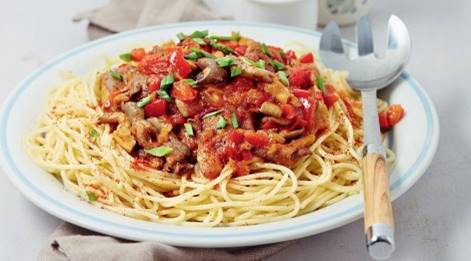

What kind of spices does paprika combine with?
 Paprika is well combined with garlic, coriander, basil, bay leaf, nutmeg, hot chilli pepper varieties.
Paprika is well combined with garlic, coriander, basil, bay leaf, nutmeg, hot chilli pepper varieties.
It does not combine with cilantro greens and onions.
Paprika. Quality indicators
In Paprika, the most valuable is the color and taste of raw materials. The color of the quality paprika should be bright red, and the taste is sweetish-spicy, not burning.
The main colorants are:
- carotenoids xanthophyll, capsorubin, capsaicin - they are responsible for the red coloring pigment of paprika;
- beta-carotene - responsible for the yellow pigment.
IT IS IMPORTANT TO KNOW! Unit of color measurement of paprika - ASTA.
In production, the color of the paprika is determined by the ASTA (American Spice Trade Association) indicators, the American Trade Association of Spices, which varies between 40 and 180. The higher the quality of the paprika, the more saturated its color. Ground pepper with a high ASTA index is characterized by a high content and stability of the coloring pigments in its composition (ASTA-40 has an orange hue, and ASTA-180 dark-red hue).
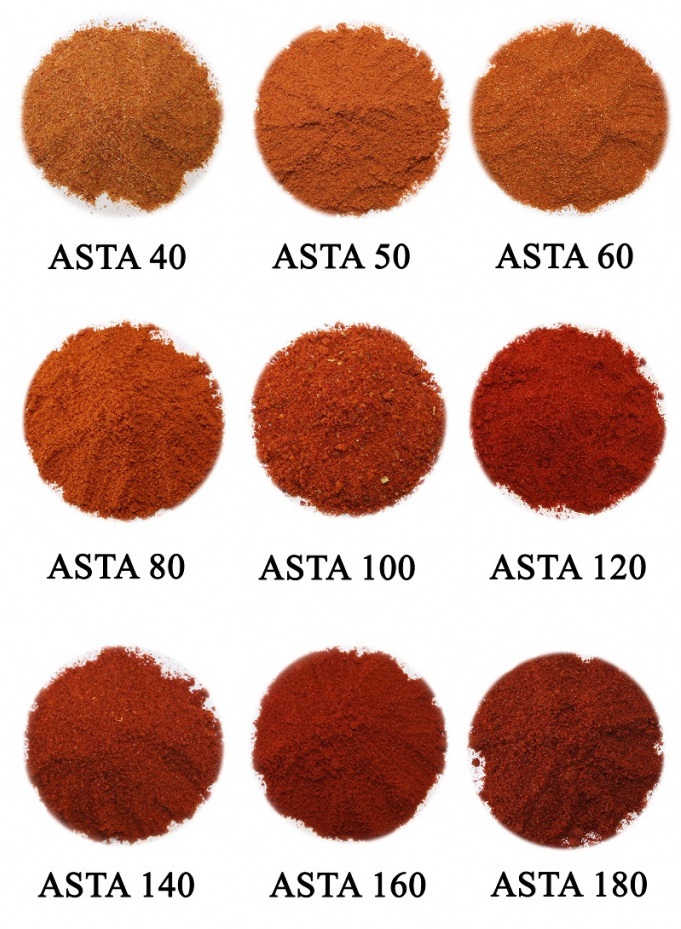
Paprika powdered TM "Pripravka" has an ASTA value of 140-160 units.
The color of the paprika depends on how much the pepper pods have ripened. Ripened fruits that are torn from the top of the paprika plant are saturated with sunlight and have a rich bright red color, which indicates a high quality of raw materials with a high ASTA index.
Fruits that grew in the lower part of the plant did not receive enough sunlight. Therefore, such fruits have a dull color or are completely discolored, have a bitter taste. Such raw materials will have a low ASTA index, so the price of such raw materials will be low.
Sample No. 1. Quality raw material Sample No. 2. Poor quality.
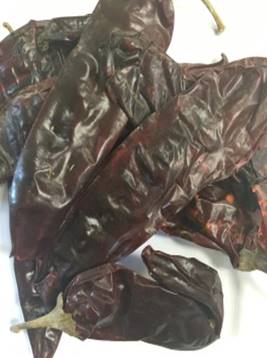
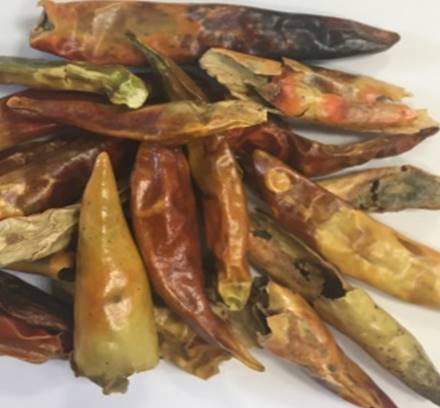
The claret shade of raw materials DOES NOT CERTIFY THE HIGH INDICATOR ASTA!
Unfair producers may mislead consumers by blending a syrup (waste after extraction of capsaicine and paprika extract), which gives a dark red (burgundy), but a DULL color.
Raw materials, diluted with spent, have a dull color, which indicates the low quality of such paprika.

Paprika with the addition of a spent. ASTA 50
Paprika. Quality indicators
IT IS IMPORTANT TO KNOW! In addition to color characteristics, paprika can be classified according to the stiffness and sweet taste.
The sweet taste of paprika depends on the type of pepper and on the volume of sugar that is included in the composition.
The burning of paprika depends on the amount of capsaicin in the ground product.
The amount of capsaicin is estimated in special units - Scoville Heat Units (SHU).
![]() BUT! Quality ground paprika does not have high gelling. The taste of a quality paprika should be sweet, with a small burning.
BUT! Quality ground paprika does not have high gelling. The taste of a quality paprika should be sweet, with a small burning.
The burning of the paprika depends on both the variety and the processing methods of the pepper pod. Most of all capsaicin is contained in septa-membrane pods. Therefore, ground pepper, prepared from whole pepper with an internal septum will be more acute. But such pepper is substandard, because in addition to the stinging, such processing of paprika affects the color. So, paprika, processed together with septums, seeds, tails will be less bright.
Therefore, high-quality paprika is processed without seeds, tails and partitions. It has a sweetish taste and bright red, rich color.
Manufacturers who monitor the quality of their products, control the level of paprika.
So, the paprika's burning must be no more than 5000 SHU. For comparison, the hot pepper color of red ground may reach more than 25,000 SHU.
THE QUALITY OF THE HAMMER HAMMER DEPENDS ON THE QUALITY OF THE PEPPER HANDS FROM WHICH HE IS MANUFACTURED!
 For the paprika of ground TM "Pripravka" uses only high quality raw materials with high ASTA scores: 140-160 ASTA. Paprika has a sweetish taste and does not contain high stiffness, which indicates the quality of grinding without seeds, partitions and tails.
For the paprika of ground TM "Pripravka" uses only high quality raw materials with high ASTA scores: 140-160 ASTA. Paprika has a sweetish taste and does not contain high stiffness, which indicates the quality of grinding without seeds, partitions and tails.
ATTENTION! CHEAP SUPPORT!
An unscrupulous manufacturer uses a number of ways to counterfeit the quality of spice, in order to reduce the price of spice.
The smaller the fraction of spice, the easier it is to falsify. Fine grind conceals the true composition of the spice, so it is almost impossible to determine the quality of raw materials.
The main ways of faking paprika and reducing the cost of raw materials MANUFACTURED MANUFACTURERS:
- Adding a spent - waste after extracting plants (extraction of capsaicin). In the spent there are solvents used for extraction - acetone, hexane. The spent has an aversion smell and a bitter taste.
Identify the falsification of spent can be based on the color of raw materials. Poor quality raw materials falsified with spent have a dull / dark red color, and raw materials without impurities will have a bright, rich red tint.
- Mixing seeds, tails and colorless fruits
- Painting of raw materials with artificial dyes
- Addition of impurities of inorganic origin (flour or starch)
When adding flour / starch, the raw material will have an unnatural color of pink shades, and when reacting with water, a characteristic smell of flour / starch will appear.
- The sale of raw materials with an excess of safety indicators (with poor microbiology, with excess in heavy metals, etc.)
ATTENTION! FALSIFICATIONS
Colorless fruits Spent paprika

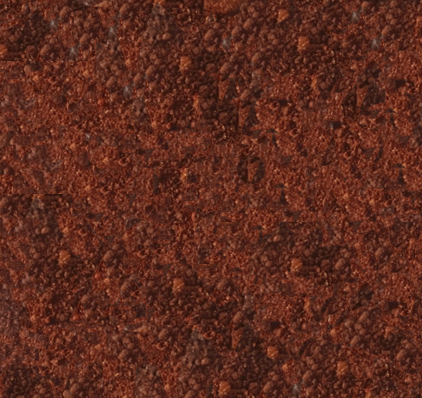
Quality ground paprika
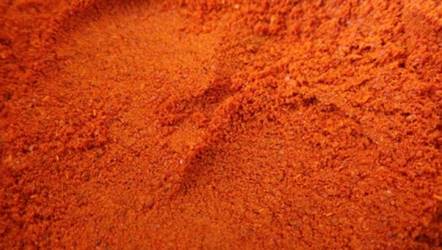
Threats that entail the use of substandard paprika
Mold is a sign of infection with molds that are dangerous to health (ochratoxins).

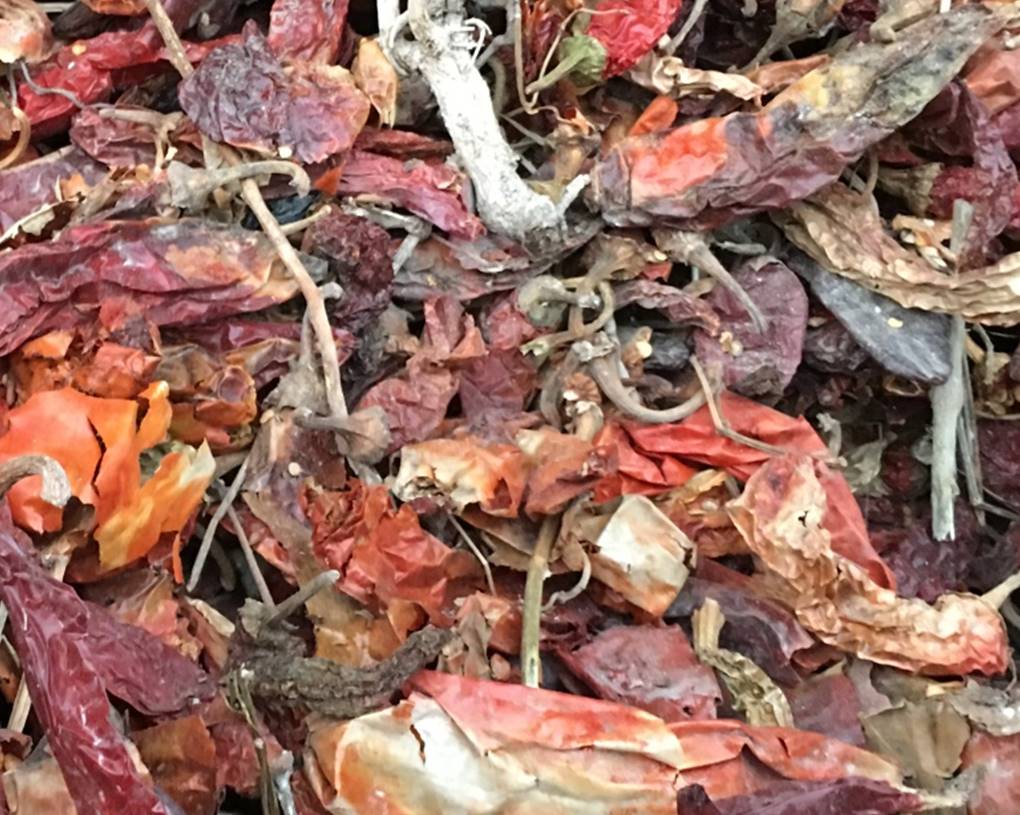
Ochratoxins are highly toxic, have a strong nephrotoxicity (affect the kidneys), and a pronounced teratogenic effect - a violation of embryonic development, provoke the appearance of physical deficiencies and deformities in the fetus. Also affect the liver and organs of the digestive tract.
Consumption of toxin even in small doses causes acute and chronic kidney disease.
Paprika, quality tests (not laboratory tests)
Quality ground paprika has a bright red, rich color without foreign dark inclusions, a characteristic spicy aroma and a sweetish taste without pronounced stiffness.
1. EVALUATION OF DRY FREQUENCY OF PAPRICS
It is necessary to pour a thin layer of paprika on a sheet, press down on top with a white sheet and evaluate:
- Color and color saturation. Quality paprika powder has a uniformly-colored, characteristic shades of bright red color, homogeneous grinding and friability. The dim color indicates the admixing of the spent in the raw material.
- The presence of dark inclusions, which indicate the content of impurities of mineral and vegetable origin.

A sample of dry powder
Has a characteristic smell, but a color with a greenish tinge. A large proportion of dark inclusions and small sticks.

A sample of dry powder
Characteristic bright red color, has a distinct smell of paprika.
2. ORGANOLEPTIC EVALUATION OF THE HAMMER PAPRIKA
Option 1. Method of "Brewing tea."
It is necessary to prepare an aqueous solution of paprika: 1 tbsp. A spoonful of paprika is poured into 100 ml of boiling water and evaluated:
- Color - for quality raw materials it should be painted in red or orange-red color, there should not be unnatural brown or greenish shades, the color should be uniform. Also, the solution should not be brightly colored - a bright color may indicate the mixing of dyes.
- Sediment - when brewing paprika, should not float to the surface of small sticks, and raw materials should evenly fall to the bottom.
- Aroma - evaluate the presence of a characteristic spicy and / or foreign flavor.
- Taste - appreciate the sweetish taste, without stinging and foreign impurities.
It is not allowed to have fat spots on the surface of the aqueous solution, their presence indicates the tinting of the raw material with fat-soluble dyes
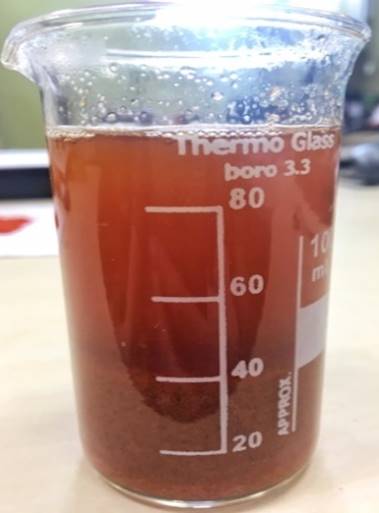
Estimation of solution
The powder precipitates with a large proportion of dark inclusions, the solution has an uncharacteristic smell.

Estimation of solution
The powder immediately precipitated, the solution has a characteristic orange-red color.
AND WHAT ARE YOU PAYING MONEY?
Paprika TM "Pripravka" passes 7 degrees of purification of raw materials:
- Culling out lots of raw materials that do not meet food safety standards
- Magnet - cleaning from magnetized metal impurities
- Vibration cleaner - cleaning of plastic, glass, garbage
- Destoner - cleaning of stones, earth
- Aspiration - cleaning from dust, insects
- Separation - removal of rotten, mold-damaged raw materials
- Metal Detector - cleaning from non-magnetized metal impurities
TM " PRIPRAVKA ". FOOD SAFETY IS GUARANTEED!
12 June 2017 Previous
Previous